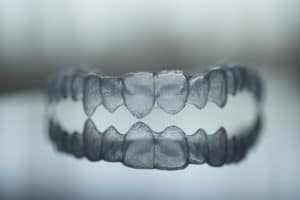
An imperfect smile doesn’t just affect how your pictures turn out—it can negatively impact your confidence and how others perceive you. Most people, especially adults, have a difficult time deciding between keeping their imperfect smile or enduring months (or years) with chunky, metal braces. Thankfully, there’s another option! Invisalign clear aligners are an effective and aesthetically pleasing alternative.
If you’re considering Invisalign, you may be wondering if this treatment can treat your orthodontic issue. Well, we’ve got good news for you! Modern advancements have made it possible for patients will all types of orthodontic problems to be candidates for Invisalign treatment.
The Responsibilities of Invisalign Wearers
Before discussing which orthodontic issues clear aligners address, you should understand that Invisalign requires a patient to be extremely responsible. To be an Invisalign patient, you must commit to:
- Wear the aligners at least 22 hours a day
- Properly clean the aligners
- Only remove them when eating and brushing
This innovative orthodontic option is best suited for older teens and adults. Talk to your dentist today to learn about the pros and cons of Invisalign orthodontic treatment.
Continue reading to learn which orthodontic issues Invisalign treats.
Overbite
When the upper front teeth significantly overlap the lower front teeth, it’s called an overbite. This issue can lead to tooth wear, TMJ disorder, and speech issues.
Invisalign corrects mild to moderate forms of overbite. More severe cases require traditional braces or other types of oral appliances.
Underbite
As one would expect, an underbite is the exact opposite of an overbite. Underbites are typically treated with a combination of orthodontic methods. Your dentist may suggest elastics, rubber bands, or traditional braces in addition to Invisalign treatment.
In severe cases, clear aligners may not be an option.
Crossbite
If only some of your upper teeth are on the inside of your lower teeth when you smile, it’s called a crossbite. This creates issues when eating and speaking. It can also lead to TMJ disorder and unnatural tooth wear.
Invisalign can widen and narrow the top and bottom arches of your mouth so that they fit together properly. Elastics and rubber bands may be included in this treatment.
Gap teeth
Gaps in any part of your smile can be unattractive and detrimental to your oral health. Thankfully, Invisalign can quickly and effectively close these unwanted spaces between your teeth.
Open bite
The definition of an open bite is when the back teeth fully align and close together, but the front teeth do not touch. This is often due to habits like thumb sucking, pacifier use, tongue thrusting, and sippy cups.
Invisalign can correct and open bite, but it often proves to be incredibly challenging. Other orthodontic treatments may be recommended.
Crowded teeth
Crowded teeth overlap one another and are much more susceptible to cavities, gum disease, and unusual wear patterns on teeth. Invisalign clear aligners put pressure on the appropriate teeth to move them into the correct positions. This treatment is much simpler compared to other orthodontic issues.
Contact an Invisalign Dentist Today
The best way to discover if Invisalign clear aligners are the best orthodontic option for you is to visit your dentist today. To receive the most accurate care, be sure to choose a dentist who is a specially trained and certified Invisalign dentist.
To meet with our highly regarded Austin dentist, call 512-346-4690 today.
